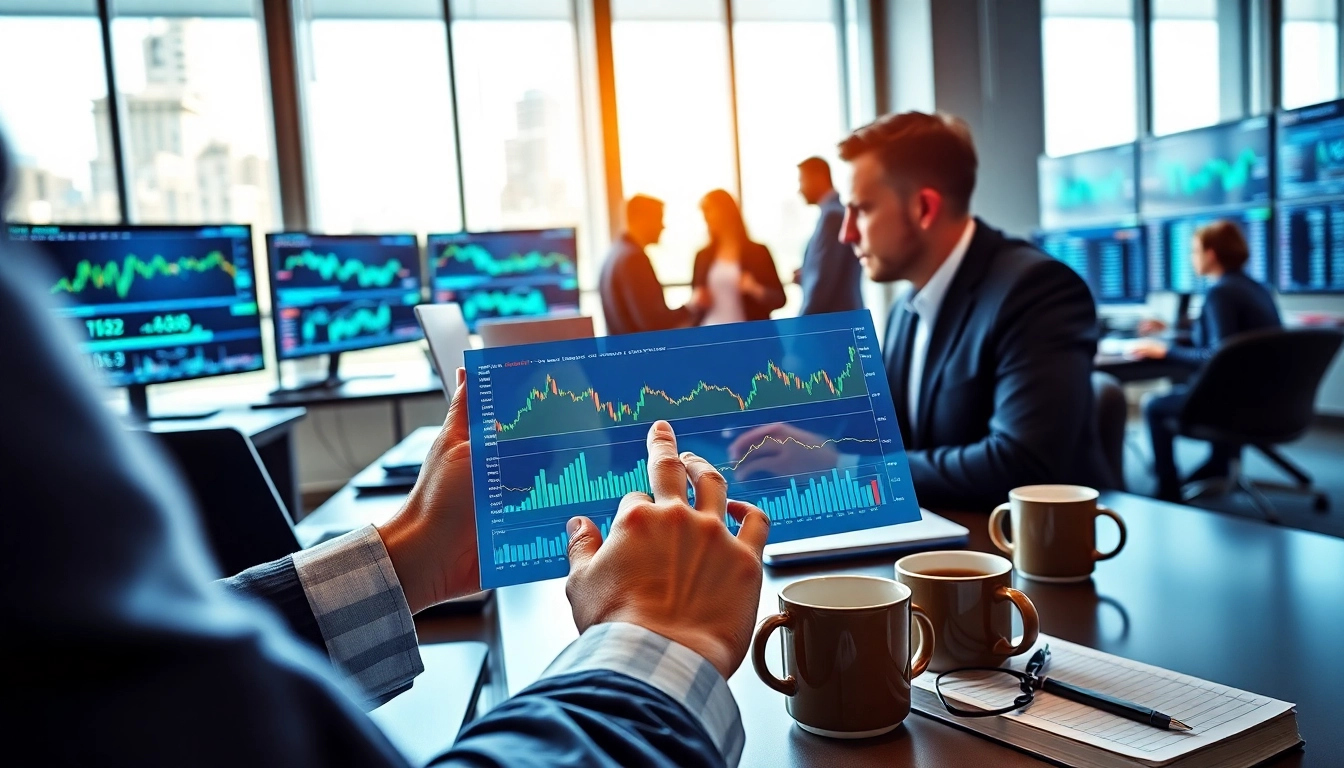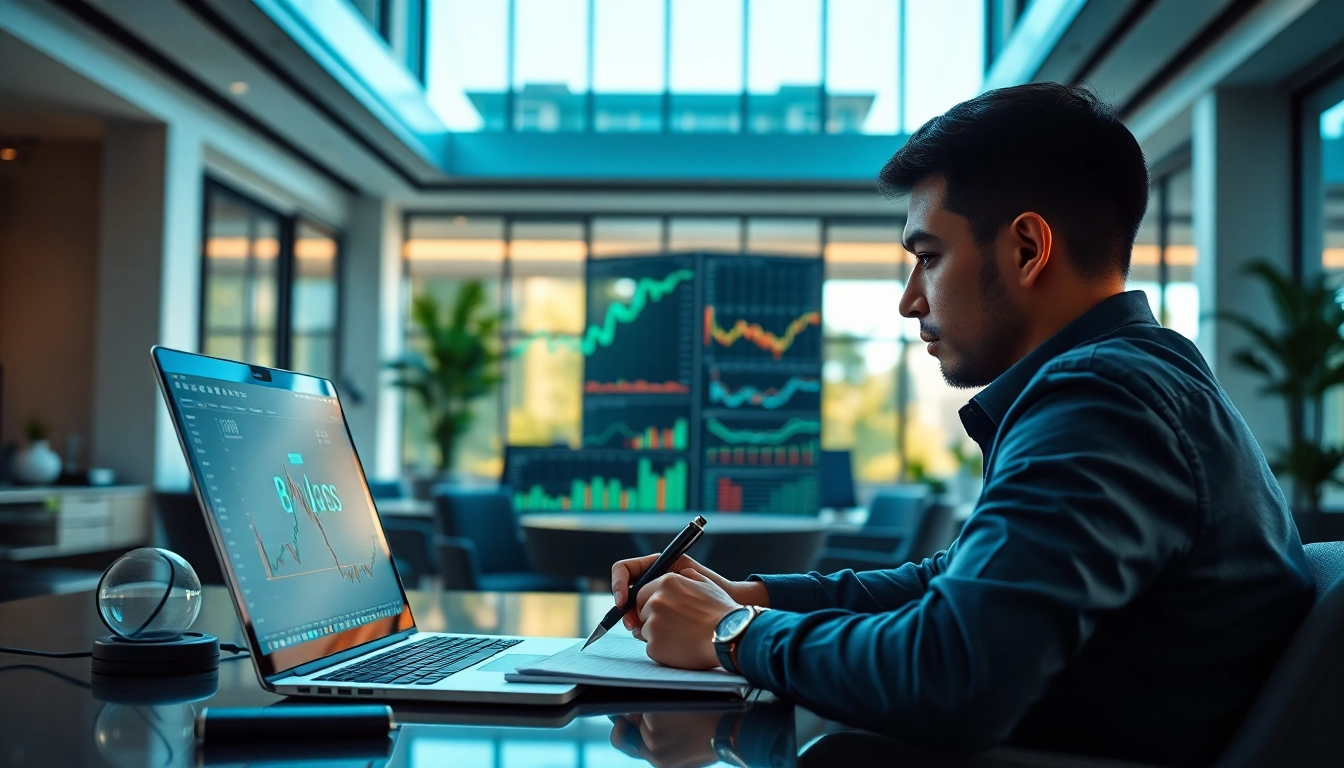Understanding Trade Futures and Their Importance
Trade futures have emerged as a crucial element in the financial landscape, enabling traders and investors alike to hedge against risks or speculate on price movements. By engaging in trade futures, individuals and institutions can secure prices in advance for commodities or financial instruments that will be delivered at a future date. This mechanism not only provides potential profitability but also contributes to market efficiency and liquidity. The complexities surrounding trade futures can be daunting for newcomers, but a deeper understanding of their features and significance can pave the way for successful trading endeavors.
What Are Trade Futures?
Trade futures are legally binding contracts to buy or sell a specified asset at a predetermined price on a specific date in the future. The assets traded in futures contracts include a wide range of commodities such as oil, gold, agricultural products, and even financial instruments like currencies and stock indices. Futures are standardized to facilitate trading on futures exchanges, providing market participants with an organized platform to transact.
When engaging in futures trading, the buyer of the contract is obligated to purchase the asset at the agreed-upon price, while the seller is obliged to sell it. This symbiotic relationship allows traders to speculate on the price movements of assets, potentially resulting in substantial profits or losses.
The Role of Futures in Financial Markets
Futures play a pivotal role in enhancing market efficiency by providing price discovery and risk management avenues. They ensure that prices reflect the collective expectations of market participants regarding future supply and demand dynamics. By facilitating speculation and hedging, futures also promote stability across markets.
For instance, a farmer anticipating a bumper harvest may sell futures contracts to lock in prices and protect against potential market dips. Conversely, a manufacturer who relies on specific raw materials can buy futures contracts to hedge against rising costs. This dual functionality underlines the importance of trade futures in both speculation and risk management.
Benefits of Trading Futures
Trading futures offers numerous advantages, making it an attractive option for various investors:
- Leverage: Futures trading often allows traders to control large positions with a relatively small amount of capital, leading to potentially high returns.
- Diverse Asset Classes: A wide array of assets can be traded through futures, from agricultural commodities to global stock indices, enabling diversified portfolios.
- Liquidity: Major futures markets typically exhibit high liquidity, allowing participants to enter and exit positions quickly.
- Price Transparency: Futures markets are characterized by publicly available price information, ensuring full market transparency.
- Hedging Opportunities: Futures can be used by businesses to protect against unfavorable market movements, making them valuable for risk management.
How to Get Started with Trade Futures
Embarking on a journey into trade futures requires careful planning and informed decision-making. Here are key steps to consider when starting your futures trading journey.
Choosing the Right Futures Market for You
Selecting a futures market that aligns with your interests and trading goals is crucial. Major futures markets include commodities such as oil, gold, grains, and soft commodities (like coffee or sugar), as well as financial futures in currencies, interest rates, and stock indices. Each market has unique characteristics and volatility profiles. For example, while energy futures might be impacted significantly by geopolitical events, agricultural futures may be influenced by weather conditions.
It is advisable to pick a market where you have some existing knowledge or interest. This familiarity will not only make the learning process smoother but also enhance your ability to analyze market conditions effectively.
Key Terminologies and Concepts
Understanding the terminology used in futures trading is essential for effective strategy formulation:
- Contract: A legally binding agreement detailing the obligations of buyers and sellers pertaining to a commodity’s future price.
- Margin: The collateral required to open and maintain a futures position. It acts as a security to cover potential losses.
- Expiration Date: The date on which the futures contract expires, and the delivery must occur.
- Open Interest: The total number of outstanding futures contracts that have not been settled. It provides insights into market activity and liquidity.
- Settlement: The process of resolving the obligations under the futures contract, including the delivery of the commodity or payment of cash.
Setting Up Your Trading Account
To commence trading futures, you need a futures trading account with a brokerage firm. The process typically includes:
- Researching Brokers: Investigate different brokerage firms, focusing on those that specialize in futures. Evaluate their fees, customer service, trading platforms, and educational resources.
- Completing Application Forms: Once you choose a broker, you’ll need to fill out an application which may involve providing personal information and financial statements.
- Funding Your Account: You will need to deposit sufficient funds into your trading account. Ensure that you meet the minimum margin requirements for your intended trading activities.
- Understanding Trading Platforms: Familiarize yourself with the trading platform provided by your broker, including order types, charting tools, and customer support options.
Strategies for Successful Trade Futures
Successful futures trading relies on strategic planning, analysis, and disciplined execution. Below are key strategies that can enhance your trading efficacy.
Fundamental Analysis in Futures Trading
Fundamental analysis involves evaluating the intrinsic value of an asset based on economic indicators and market fundamentals. For futures trading, this entails analyzing factors such as supply and demand dynamics, government policies, and macroeconomic trends that influence the markets.
For example, in agricultural futures, seasonal planting and harvest cycles significantly affect prices. Understanding these periods can lead to informed decisions. Additionally, factors such as weather events, trade agreements, and geopolitical impacts all play crucial roles in driving futures prices.
Technical Analysis and Trading Signals
While fundamental analysis focuses on the bigger picture, technical analysis provides insights based solely on price action and market data. Traders employ various charting techniques, patterns, and indicators to forecast future price movements. Common technical indicators include:
- Moving Averages: Helps identify trends and potential reversal points.
- Relative Strength Index (RSI): An oscillator that indicates overbought or oversold conditions.
- Bollinger Bands: Used to identify volatility and price levels within a context of support and resistance.
Combining technical signals with fundamental insights can create robust trading strategies that position traders for success.
Risk Management Techniques
Risk management is vital when trading futures, given the potential for high volatility and leverage. Effective risk management strategies include:
- Position Sizing: Determine the appropriate size of your trades based on your capital and risk appetite. This ensures that no single trade can significantly impact your account.
- Stop-Loss Orders: Setting stop-loss orders will automatically close your positions at predefined loss levels, mitigating the risks associated with adverse price movements.
- Diversification: Spreading investments across different futures contracts can help reduce exposure to risk from a single asset.
Common Challenges in Trade Futures and How to Overcome Them
Engaging in futures trading comes with its own set of challenges that traders must navigate. Awareness and preparedness can significantly reduce the impact of these challenges.
Market Volatility and Its Impact
Market volatility is inherent in the futures market and can be triggered by various events, including economic data releases or geopolitical developments. Sudden price swings can lead to unexpected losses. To manage volatility, traders should remain informed about key events impacting the markets and consider using strategies like options to hedge against extreme price movements.
Psychological Barriers for Traders
The emotional aspect of trading cannot be overstated. Psychological barriers, such as fear and greed, can impair decision-making. Implementing a disciplined trading plan with clear rules—for entry, exit, and risk management—can help mitigate the influence of emotions. Additionally, establishing a routine, such as regular reflection on trades and ongoing education, can enhance a trader’s mental fortitude.
Adapting to Changing Market Conditions
Market conditions can change rapidly, influenced by global events or economic statistics. To stay competitive, traders must be adaptable, continually refining their strategies based on evolving market insights. Incorporating real-time data feeds and continuously educating oneself about market trends are effective ways to align trading strategies with current conditions.
Measuring Success in Trade Futures
Measuring success in futures trading involves the use of specific metrics and tools to gauge performance accurately. Here are important considerations for tracking your trading achievements.
Key Performance Indicators (KPIs)
Establishing relevant KPIs is critical for evaluating trading success. Some essential KPIs include:
- Total Return: The overall gain or loss relative to the invested capital.
- Win Rate: The percentage of profitable trades versus total trades, indicative of trading strategy effectiveness.
- Maximum Drawdown: The largest peak-to-trough decline in the account balance, helping to assess risk exposure.
Tools for Tracking Your Trading Performance
Utilizing technology can enhance the tracking of your trading performance. Several platforms offer sophisticated tools for performance monitoring, including:
- Trading Journals: Keeping a comprehensive trading journal allows you to document trades, strategies, and reflections, facilitating continuous learning.
- Performance Analytics Software: Solutions that analyze historical performance, evaluate strategies, and generate insightful reports can ensure a data-driven approach to future trades.
Continuous Learning and Market Adjustments
Markets are dynamic, and successful traders must embrace a continuous learning mindset. Regularly attending workshops, reading literature, and engaging with online courses/modules specifically designed for futures trading can enhance your skills. Furthermore, monitoring your trading results and experimenting with new strategies allows you to adapt your trading approach effectively to align with changing market conditions.



